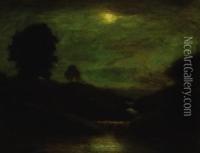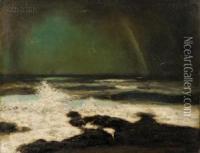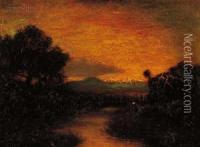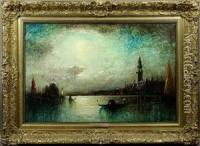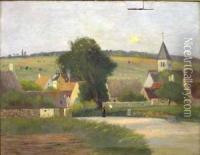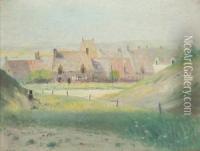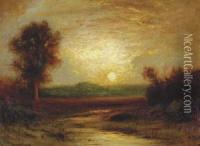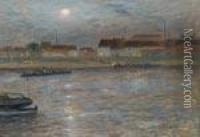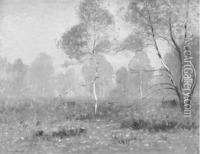George Henry Bogert Paintings
George Henry Bogert was an American painter known for his evocative landscapes and atmospheric depictions of rural scenes. Born on December 6, 1864, in New York City, Bogert's artistic inclination was evident from an early age. He initially studied at the National Academy of Design in New York and then furthered his art education in Paris at the Académie Julian under the tutelage of Jean-Paul Laurens and Benjamin Constant.
Bogert's style was influenced by the Impressionist movement, which was gaining prominence during his time in Europe. He adopted the Impressionist approach to light and color, which is exemplified in his luminous landscapes. He was particularly adept at capturing the transient effects of light on water and sky, often painting sunsets and twilights with a remarkable sense of mood and atmosphere.
After returning to the United States, Bogert continued to develop his unique style, which blended the technique and palette of Impressionism with his own interpretation of the American landscape. He frequently painted the Hudson River and the surrounding countryside, as well as European scenes inspired by his travels. Despite his Impressionist leanings, Bogert's work maintained a certain solidity in form, distinguishing his approach from that of his French contemporaries.
Throughout his career, George Henry Bogert exhibited widely and with great success. His works were shown at the Paris Salon, the National Academy of Design, and the Pennsylvania Academy of the Fine Arts, among other prominent venues. He earned numerous awards, including a bronze medal at the 1900 Paris Exposition Universelle.
As an artist, Bogert was also active in the art community. He became a member of the National Academy of Design and served as an instructor at the Art Students League of New York, where he influenced a new generation of artists.
George Henry Bogert's paintings are characterized by a serene and poetic quality that captures the essence of the landscapes he portrayed. His ability to evoke emotion through the play of light and color made him a significant figure in American Impressionism. Bogert continued to paint until his death on May 13, 1944. Today, his works can be found in various public and private collections, appreciated for their tranquil beauty and atmospheric depth.


